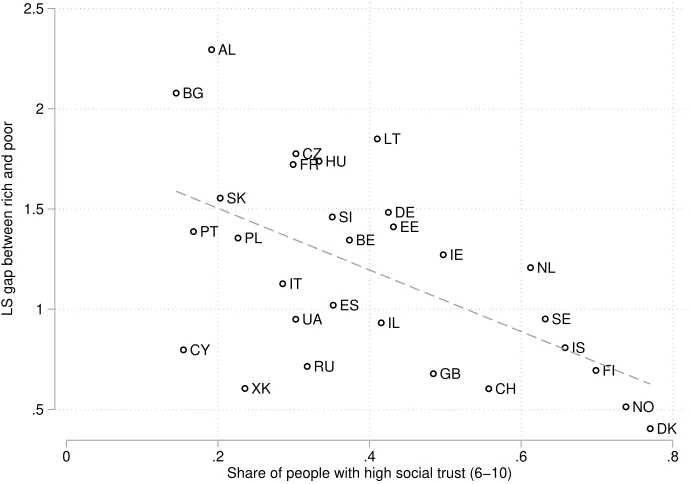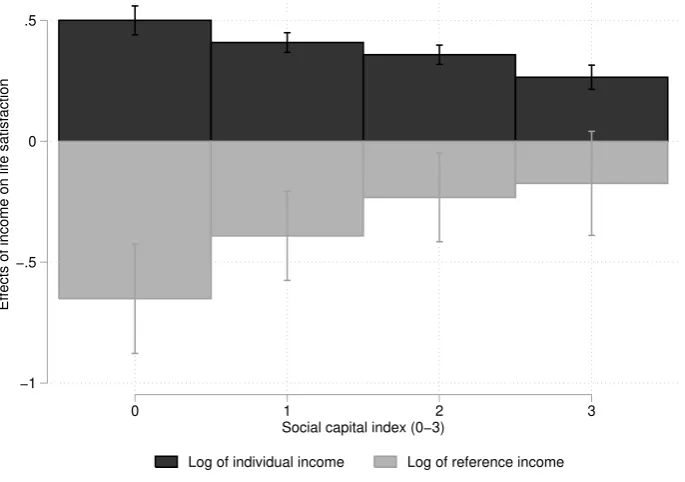Money, Social Capital and Materialism Evidence from Happiness Data
Full text
Figure




Related documents
Using data from the World Values Survey, the authors estimate reduced-form regressions of the main determinants of social capital controlling for HIV prevalence,
The results suggest that under the assumption of error independence among the three output functions, social capital does indeed significantly impact innovation output. While not all
A regression model is constructed to test the social capital which is known as a robust predictor of health literacy after controlling gender, age, education, income, and
First, does social capital defined by membership in local associations influence the power of rural households to make decisions that change their life.. Is the
Using data from the World Values Survey (WVS), the author estimates reduced-form regressions of the main determinants of social capital controlling for HIV prevalence,
intrinsic relational social capital seems to be have been an important negative contributor to the happiness trend (amounting to roughly two-thirds of the negative impact of the
When analysing the impact of social capital on economic growth, innovation, or productivity, two important aspects of social capital that are analysed are networks and trust, or
I report only estimates of fixed-effects models to make them comparable to Krol’s results. Estimates of random-effects models are very close to those of fixed-effects models..





